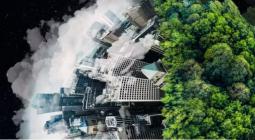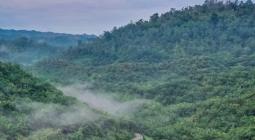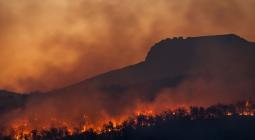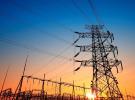The Sunbelt’s Growing Population Faces Increasing Climate Hazards
New research identified the counties in the U.S. with large and vulnerable populations exposed to heat stress, water shortages or wildfire, with most found in the southern half of the country.
Counties across the southern half of the U.S., especially those with large and socially vulnerable populations, will be much more exposed to wildfire, drought and extreme heat than other parts of the country as the region’s climate warms in the coming decades, according to new research from the U.S. Forest Service and Resources for the Future.
The report, “Changing Hazards, Exposure, and Vulnerability in the Conterminous United States, 2020–2070,” builds on the Forest Service’s 2020 Resources Planning Act Assessment, which makes 50-year projections on the conditions of renewable resources across the country’s forests.
In the study, researchers identified the continental U.S. counties that are especially exposed to natural disasters stemming from water shortages, extreme heat and wildfires, as well as those with socially vulnerable populations. The study’s various models, based on rates of growth and warming, show communities from Arizona to Florida at particular risk as states in the southern half of the country are seeing booming populations, long-standing inequities in their communities and increasing climate-driven threats.
The models give researchers, federal agencies and states not just an idea of how at-risk a county is to those natural disasters, but also how communities living within them could be impacted as people continue to move in. Much of the risk for communities from all three types of natural disasters stems from population growth.
“Decision makers have to think about more than just how the landscapes are changing,” said study co-author Claire O’Dea, national program leader of the Resources Planning Act Assessment for the Forest Service. “They have limited budgets, other concerns and trade-offs that they need to factor in. So being able to see, not just potentially how our resources and how these hazards are changing, but how that could potentially play out for the American public and what those potential implications might be, that is another angle and something that’s really important.”
Sunbelt metropolises such as Phoenix have been booming for a long time, and their growth is continuing, though the rates have slowed in recent years. But the region is especially vulnerable to water shortages, extreme heat and wildfires, and is home to many communities of color, low-income households and immigrants, all more vulnerable to the impacts of climate change.
The researchers found high rates of overlap among counties at risk for increased heat stress and drought and those that have large and vulnerable populations. Between 31 and 65 percent of counties facing water shortages and 46 to 68 percent of counties facing heat stress by 2070 have substantial imperiled populations. Those correlations clearly identified the counties most at risk from the impacts of climate change, information potentially valuable to policymakers, the authors said.
But only 5 to 19 percent of wildfire-prone counties also have large and vulnerable populations.
“Where you see these projections for high wildfire risk, you don’t have an overlap between those high-density counties and those highly vulnerable counties,” O’Dea said. That leads to decision-makers having to evaluate tradeoffs, she said: managing the risks to the communities with the highest populations or the communities most vulnerable to their impacts.
But the researchers found the areas exposed to high wildfire hazard will double between 2020 and 2070, and medium-high-hazard areas will triple in size. The trend of bigger and hotter wildfires will continue in the West, they found, but also grow in the Southeast. And the population exposed to these fires will grow substantially as well, from 2 million people in 2020 to anywhere between 9 million and 20 million by 2070.
Historically, the Southeast’s wildfires have usually been small and quickly put out because of the region’s dense population, while also being limited by short dry seasons, unlike the West. There, wildfires are less common but bigger thanks to the region’s vast wide open spaces and arid conditions, which have only grown in recent years due to climate change.
But with increasingly warmer and drier seasons, the eastern half of the country is seeing more wildfires. In the past month, hundreds of people had to evacuate their homes in New York as a result. It’s an issue researchers said will only grow, and will be especially concerning for communities in the Southeast.
“Americans see wildfire as a Western problem, and that’s becoming less true,” said Morgan Varner, senior scientist and director of research at Tall Timbers, a southeastern research group based in Tallahassee, Florida, focused on wildfires.
The Southeast is a fire-prone ecosystem that’s seeing more people move into it, he said, which is adding more pressure on nature and putting more people at risk from wildfires and their impacts.
A concern as well for wildfires in the region, Varner and the study’s authors said, is the difference in land ownership. In the West, many of the massive wildfires that have broken out over the past decade were on public lands owned by the U.S. Forest Service or other federal and state agencies. But in the Southeast, most of the land is privately owned, making management and prevention of fires more difficult. It’s also a more densely populated region compared to the West.
Though the Southeast is especially vulnerable, pockets of counties across the country will see increases in water shortages, heat stress and wildfires. By 2070, drought in southwestern Texas, southern Louisiana and large swaths of New Mexico and Arizona will intensify, while millions more people across the country will be exposed to heat stress. Climate change is driving the increased risks, but so too is the population growth rates in those states.
“The most important information to take away from this is not so much where these things occur now, but how they’ll change going into the future,” such as the new regions that will experience more frequent wildfires and the communities with large and vulnerable communities especially at risk of the natural disasters studied, said Dave Wear, the report’s lead author and a senior fellow at Resources for the Future. “Then we can begin to ask how we could target mitigation activities and address these issues ahead of the curve.”
Cover photo: A firefighting helicopter flies near as a home burns from the Mountain Fire on Nov. 6 in Camarillo, Calif. Researchers have found areas exposed to high wildfire hazard will double between 2020 and 2070. Credit: David McNew/Getty Images





